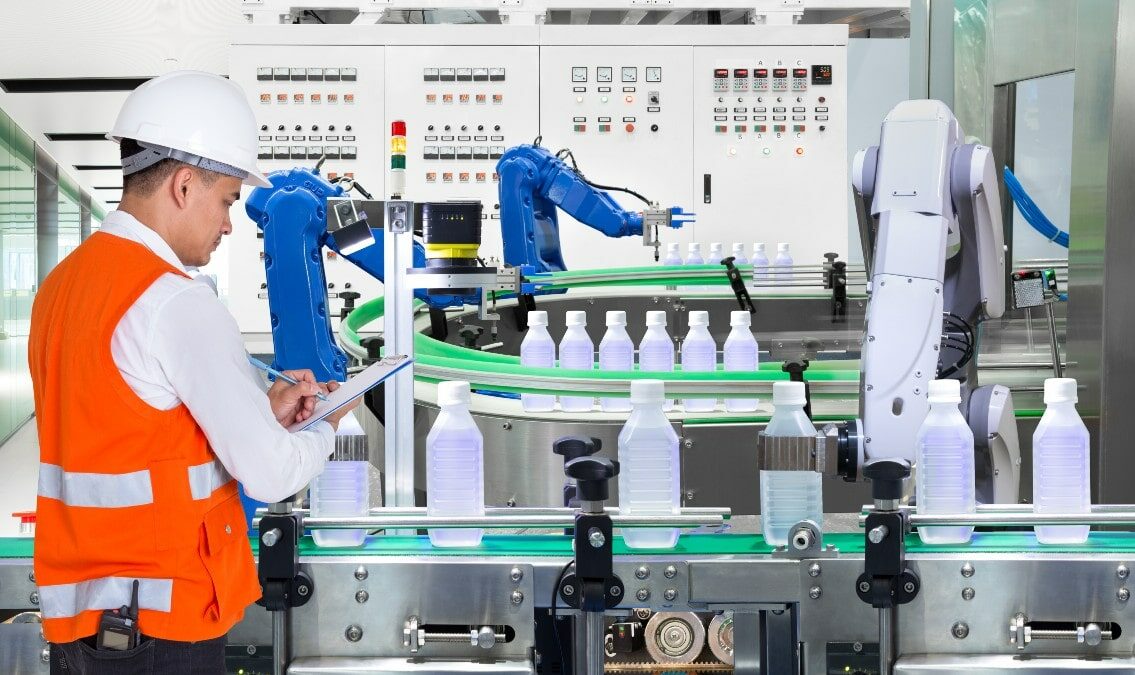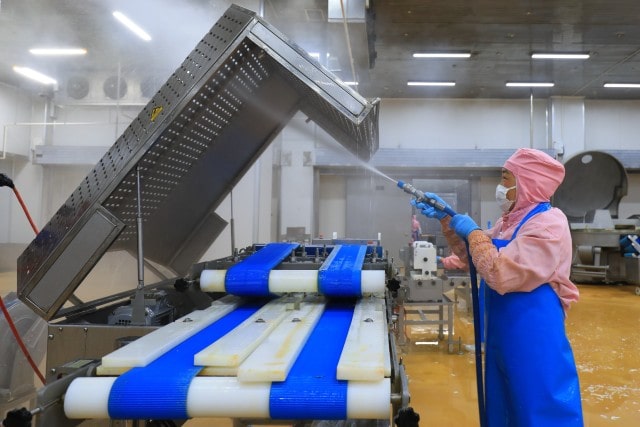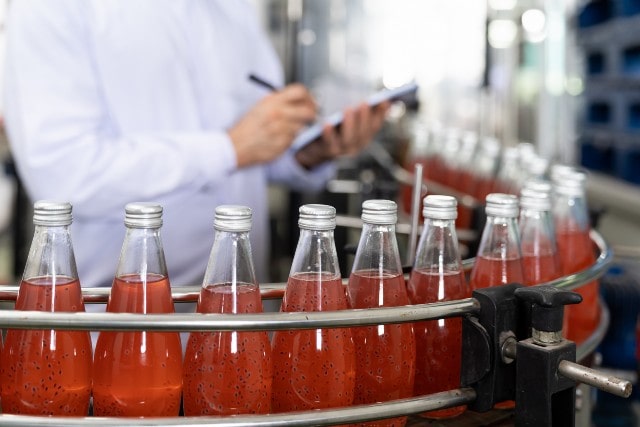Food Processing Equipment Maintenance: 3 Tips for Care and Upkeep of Your Equipment


Food processing operations are critical to society’s continued function. The preparation of food for commercial transport and sale not only gives shoppers across the country affordable, fresh options year-round, but it also provides the public with a uniquely fundamental sense of security and stability.
When it comes to facilities maintenance, the assets used in food processing plants enable these operations to hit their quotas and projections reliably. Were a critical component to fail, the entire supply chain could very well grind to a halt. Even worse, inadequate equipment care or food processing equipment maintenance could lead to potential product contamination.
Your facility doesn’t have to be the next unwilling star of the evening news, however. Bacterial and reliability risks can be dramatically reduced by incorporating certain strategies, standards, and procedures into your equipment maintenance plan. What’s more, effective maintenance management can reduce equipment manufacturing overhead costs for food manufacturers.
To get you started, we’ve compiled need-to-know information about caring for food processing machines and the relevant FDA standards that govern their use. Follow these food processing equipment maintenance tips, and you’ll be that much closer to a clean, compliant, and productive plant.

The number-one thing to keep in mind in this industry is maintaining FDA compliance. The Food and Drug Administration prioritizes food safety above all else, and the reasons are obvious: should commercially processed food become contaminated during preparation, potentially compromised products could wind up in countless households throughout the country, causing sickness or even death.
To prevent that scenario from playing out, the FDA mandates food processors to build several layers of protection into their operations. Two important regulatory standards governing such safeguards are the CGMP and FSMA.
The FDA’s Current Good Manufacturing Practices are a set of robust, binding manufacturing standards that most food processing facilities must follow. The policies in the current CGMP iteration include several rules that plant managers must keep in mind when creating or implementing equipment maintenance strategies and standards.
Chief among the policy’s guidelines is a framework for establishing effective controls throughout the production line. Three major categories of CGMP controls include:
These controls aren’t just safeguards against food safety issues – they can also act as the first warning of impending mechanical failures or other equipment maintenance issues. Everything from refrigeration systems to automated cooking operations benefit from the implementation of effective controls.
Here’s an example: say a freezer no longer keeps foods in the proper temperature range for frozen products. A process control like a refrigeration alarm will issue a warning once the unit exceeds a set temperature threshold for a certain amount of time. Managers responding to the alarm can investigate further, isolate the failure, and remedy the problem before it worsens. This can prevent costly operational bottlenecks and wasteful spoilage.
Signed into law in 2011, the Food Safety Modernization Act was designed to reduce and control outbreaks of food-borne illnesses. The law’s intent was to develop a preventive solution that, when effectively executed, would reduce the risk of contamination and outbreaks happening in the first place.
The law, which is administered by the FDA, is considered one of the most significant amendments to food safety laws in the department’s history. The seven FSMA rules and subsections cover wide ground, with each specific rule targeting a particular aspect of the food production and transportation supply chain.
While the rules laid out by the FSMA don’t specifically address equipment maintenance, they do make food processing facilities take responsibility for implementing certain safeguarding, recordkeeping, and sanitation standards. Meeting these standards means incorporating diverse plant strategies, including robust care and sanitation of machines. Failure to do so may violate certain sanitation regulations stipulated by the FSMA.

Cleaning is key to proper equipment upkeep. This is true with anything, from household appliances to industrial food processing machines. Of course, the risks are far higher in a commercial food production facility, where inadequate cleaning protocols can lead to component failure, bacteria growth, and food safety concerns, among other things.
You can prevent this by building out a robust cleaning schedule, with a frequency to be determined by the usage and type of equipment. Some assets may need to be cleaned daily; others, a few times a week or less. Other machines may require multiple cleanings throughout the day.
How do you determine an effective cadence for proper cleaning, including sanitation and deep cleaning? Consider leveraging any of the following resources:
As you further research these topics, bear in mind that cleaning is not the same as sanitation. While the distinction sounds pedantic, it’s not: cleaning removes dirt particles, while sanitizing a surface kills germ cells that could cause bacteria. In a food processing plant, equipment must be cleaned and sanitized in order to meet applicable facility maintenance and food safety standards.

A robust maintenance regimen is nothing without the buy-in of the entire staff. If even one person doesn’t follow cleaning protocols, not only can that sink team morale – it can also lead to noncompliance with federal food safety regulations like the aforementioned FSMA and CGMPs.
To keep everyone on the same page, you’ll want to use logs to confirm every time a machine was broken down and cleaned. These logs can be either paper-based or digital. Both mediums are effective solutions, but which is better depends on the specific piece of equipment.
Another reason to love cleaning logs? They provide a paper trail that can be indispensable should you need to prove to auditors or regulatory authorities your history of compliance. Without logs to back up what sanitation procedures were being followed at each workstation, it’s impossible to verify what was and wasn’t done – and no governing body will give you the benefit of the doubt should you find yourself in such a situation.
Paperwork is also invaluable for documenting equipment service. Did a technician inspect a certain machine when scheduled to? Were specific wear parts replaced in a timely manner? Did every scale undergo its routine calibration? All these questions would be up in the air if relevant service and maintenance wasn’t appropriately documented. Keeping robust maintenance logs cuts confusion, saves money, and helps managers adhere to proper servicing intervals for different equipment.
To elaborate on that last point, equipment tags can help immensely in informing users about key maintenance intervals or requirements. These tags can integrate seamlessly with a variety of food traceability software solutions to streamline documentation, maintenance, repairs, and other vital information about every asset. Durable, application-specific labels can provide all the pertinent information without any of the fluff. It’s an unobtrusive, low-cost, refreshingly simple asset tracking solution that is perfect for the rigors of the food processing and food service industry.
The world of food processing is a complicated one, subject to intense government scrutiny, serious logistical challenges, and many other pressures and challenges unique to the industry. By following the tips outlined here, you’ll be able to establish a manageable equipment maintenance plan that will help keep your plant assets clean, compliant, and productive for years to come.
Our sales engineers are experts in automatic asset tracking, tagging and identification,a nd can answer all your questions. Get in touch now.
Lets Talk ›Enter your information and get a free checklist of the top questions to answer to plan a successful asset tagging project for any maintenance tracking or facility management system.